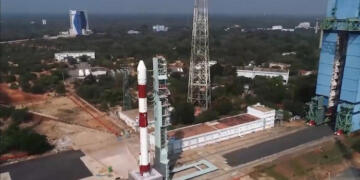In the realm of fintech, innovative technologies have played a pivotal role in shaping Payment Systems. Over the past few decades, these systems have evolved significantly, driven by the need for convenience, security, and faster transaction processing. This evolution is a testament to the transformative power of technology in the financial sector.
Contactless technology enables consumers to make payments using their smartphones or debit/credit cards without physically handing over their payment instruments. This technology leverages Near Field Communication (NFC) and Radio-Frequency Identification (RFID) for secure wireless transactions. It evolves around securely transmitting the cardholder data to the terminal using a phone device used by digital wallets or a simple credit/debit card.
Priyank Rathod is an expert in automation embedded systems applicable to critical fields like Manufacturing, micro module reactors, and AR/VR, devices. His work involved making it stable and robust enough to be reliable in each instance. He specifically worked on the display driver that these terminals used. NFC reader antennas are typically placed behind the LCD screen, where continuous high-speed data is transmitted to the LCD panels. It would introduce a lot of notice, and given that NFC is a near-field communication, there is a chance that the data will be corrupted. To fix the corruption of the payment-related secure data, there is a novel technology being developed over his tenure, where during the initialization of the NFC reader, the LCD frequency would be dropped to a minimum to reduce the noise from the data lines to make sure the payment is getting processed stably. Today, this technology is available to every payment terminal available in the market and enables digital wallets and NFC-based payment methods.
Another domain where technological strides were made is the AR/VR/MR space. MR extends AR and VR, allowing digital and physical environments to interact. By merging the real world with virtual elements, MR creates a more immersive experience, allowing users to manipulate virtual objects in the real world or place virtual objects into their environment. It has the great potential to revolutionize various industries, including gaming, education, healthcare, retail, and real estate. With advancements in hardware and software technologies, AR/VR experiences are becoming more immersive, interactive, and accessible than ever before.
Priyank’s stint at Magicleap was where he worked on the MR device, preferably an XR device. He worked on most of the Operating system stack, making the system flawless for the end user. It involves the lower-level boot-loader and sensor drivers to the service running to collect the logs from the remote device and perform the Over the Air updates.
The device has many features and allows users to feel feedback based on touch. It supports eye tracking to track the direction the user is trying to see and focus on the areas where the user is paying attention. Some use cases involve the 5G connectivities to these devices. The device is connected to the central processing virtual environment with the lowest latency to process/record or update the existing virtual space.
The most recent domain where technological innovation happens supersedes anything ever seen to enable AI on the local level, preferably called edge AI. In this category, AI capabilities are being delivered right onto the consumer PCs, where it can process the data locally instead of on the cloud to reduce the latency and protect the user data by processing it locally. Another innovative technology transforming PCs with AI capabilities is Natural Language Processing (NLP). NLP enables computers to understand human language and respond accordingly, allowing more intuitive interaction between users and their devices.
Contactless payments and digital wallets are innovative technologies shaping the future of payment systems. These technologies offer enhanced convenience, improved security, faster transactions, and reduced costs, making them essential components of our evolving financial landscape. AR/MR/VR are innovative technologies shaping the future of spatial computing. These technologies offer enhanced immersion, improved interaction, and a more natural user experience, making them essential components of our evolving AR/MR/VR landscape. PCs with AI capabilities and natural language processing offer more than a standard PC. These technologies provide enhanced personalization, improved security, increased efficiency, and more intuitive interaction, making them essential components of our evolving computing landscape.
As experts like Priyank Rathod, professionals, and decision-makers in fintech, AR/VR/MR, and AI/ML industries, continue exploring the potential of these emerging technologies, because of these high-end professionals, we can look forward to the future and see the transformations they helped along the way and continue to do so. Your role in this journey is crucial, and your insights and contributions drive these innovations forward.




























